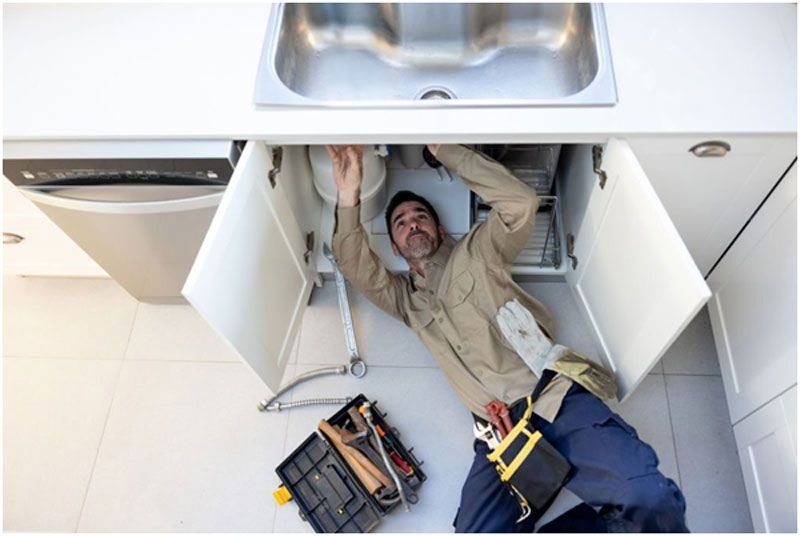When faced with a plumbing emergency, the waiting period for a professional plumber to arrive and fix a plumbing problem can be stressful. However, this time can be utilized effectively to mitigate damage, prepare for the plumber’s arrival, and ensure a more efficient repair process. This article will explore five practical actions you can take during this interim period, transforming potentially wasted time into productive preparation.
1. Contain the Situation to Prevent Further Damage
The first and most crucial step when facing a plumbing issue is to minimize the damage. Water can cause significant harm to your home’s structure and possessions, so acting quickly is vital.
Shutting Off the Water Supply
If the plumbing issue involves a leak or burst pipe, locate and turn off the main water supply to your house. This valve is typically found in the basement, garage, or outdoors near the street. Turning off the water will prevent more water from flowing into the problem area and exacerbating the situation.
Controlling Water Spread and Protecting Belongings
Once the water supply is shut off, focus on containing any standing water or leaks. Use buckets, towels, or mops to manage the water and prevent it from spreading to other areas. Move furniture, rugs, and valuable items away from the affected area to prevent water damage. Protecting your belongings not only reduces the potential for loss but also clears the area for when the plumber arrives.
2. Assess and Document the Problem
While waiting for the plumber, take time to assess the situation thoroughly. Understanding the problem as best as you can will aid the plumber in quickly diagnosing and fixing the issue.
Identifying the Source and Nature of the Problem
Try to identify where the problem is coming from and what it involves. Is it a leaking faucet, a burst pipe, or a blocked drain that prevents high-quality performance? Take note of any sounds, smells, or visible signs like water stains that might indicate the nature and severity of the problem.
Documenting the Issue for Reference
Documenting the problem can be incredibly helpful. Take photos or videos of the leak or damage as instructed by www.sandiegoemergencyplumbing.com pros, as these can provide valuable information to the plumber and can also be useful if you need to file an insurance claim. This visual evidence can help the plumber understand the issue before they even arrive, leading to a quicker and more efficient repair process.
3. Gather Necessary Information and Supplies
While you wait, gather information and any supplies that might be helpful for the plumber. This preparation can save time and facilitate a smoother repair process.
Warranty and House Information
If your affected plumbing fixture or system is still under warranty, have the documents ready. Additionally, prepare any information regarding your home’s plumbing history or past repairs, as this can provide valuable context to the plumber.
Preparing Tools and Cleaning Supplies
While the plumber will bring their own tools, having basic tools like a wrench or plunger at hand can be useful. Also, prepare cleaning supplies for post-repair cleanup. This includes buckets, mops, and towels to deal with any residual water or mess.
4. Clear the Work Area for Easy Access
Ensuring that the plumber has clear and easy access to the problem area is essential for a quick and effective repair.
Removing Obstructions and Creating Space
Clear any personal items, furniture, or household objects that might obstruct access to the plumbing issue. This not only makes the plumber’s job easier but also protects your belongings from damage or dirt during the repair process.
Providing Adequate Lighting
Good lighting is crucial for plumbing work. If the problem area is poorly lit, set up additional lighting to ensure the plumber can see clearly. This attention to detail can significantly impact the efficiency of the repair.
5. Prepare for Post-Repair Activities
Thinking ahead to post-repair activities can help in getting your household back to normal as quickly as possible after the plumber’s work is done.
Planning for Water System Checks
After the repair, you’ll need to check that your water system is functioning correctly. Plan to test faucets, toilets, and other fixtures to ensure the issue has been resolved and there are no new problems.
Anticipating Cleanup and Restoration
Finally, anticipate some cleanup work after the plumber finishes. In cases of significant water leakage, you may need to dry out carpets, air out rooms, or do some general cleaning. In severe cases, consider the possibility of needing professional cleaning services or water damage restoration.
The time waiting for a plumber to arrive can be pivotal in mitigating damage, preparing for an effective repair process, and speeding up your return to normalcy. By taking proactive steps such as containing the situation, assessing and documenting the issue, preparing the workspace, and planning for the aftermath, you can significantly contribute to a more positive outcome. Remember, in plumbing emergencies, every action counts towards protecting your home and easing the repair process.

Reblog It collaborates closely with clients to develop tailored guest posting strategies that align with their unique goals and target audiences. Their commitment to delivering high-quality, niche-specific content ensures that each guest post not only meets but exceeds the expectations of both clients and the hosting platforms. Connect with us on social media for the latest updates on guest posting trends, outreach strategies, and digital marketing tips. For any types of guest posting services, contact us on reblogit.webmail[at]gmail.com.
